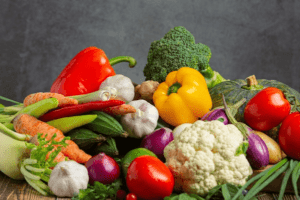Sweets Butter scotch- Butterscotch is a sweet flavor that is often associated with a combination of butter and brown sugar. It’s commonly used in confectionery to create candies, desserts, and sauces. If you’re interested in making butterscotch-flavored sweets, here’s a simple recipe for butterscotch sauce that you can use in various desserts:
Ingredients:
- 1/2 cup (1 stick) unsalted butter
- 1 cup brown sugar, packed
- 1 cup heavy cream
- 1 teaspoon vanilla extract
- Pinch of salt
Instructions:
- In a medium saucepan, melt the butter over medium heat.
- Add the brown sugar and stir until well combined. Allow it to cook for 2-3 minutes, stirring constantly, until the sugar has dissolved and the mixture is smooth.
- Slowly pour in the heavy cream while stirring continuously. Be careful as the mixture may bubble up.
- Allow the mixture to come to a gentle boil, then reduce the heat to low and simmer for 5-7 minutes, or until the sauce has thickened slightly.
- Remove the saucepan from the heat and stir in the vanilla extract and a pinch of salt.
- Let the butterscotch sauce cool for a few minutes before using it in your desired recipe.
You can use this butterscotch sauce as a topping for ice cream, drizzle it over cakes or brownies, or incorporate it into various desserts. Enjoy your butterscotch-flavored sweets!
What is Sweets Butter scotch
“Butterscotch” typically refers to a flavor that is sweet, buttery, and has a distinctive taste derived from brown sugar and butter. It’s often used in confections such as candies, sauces, and desserts. Here are a few common sweets that are associated with butterscotch flavor:
- Butterscotch Candy: Hard or chewy candies with a rich butterscotch flavor are popular. They can be individually wrapped or sold in bulk.
- Butterscotch Pudding or Mousse: Creamy desserts like pudding or mousse can be infused with butterscotch flavor, offering a delightful and smooth treat.
- Butterscotch Ice Cream or Toppings: Butterscotch-flavored ice cream or sauces are common, and they can be enjoyed on their own or as a topping for other desserts.
- Butterscotch Brownies or Blondies: These baked treats incorporate butterscotch flavor into the batter, creating a delicious and chewy dessert.
- Butterscotch Cookies: Butterscotch chips or chunks can be added to cookie dough to create cookies with a rich and sweet flavor.
- Butterscotch Cake: Cakes can be flavored with butterscotch, and you can also find butterscotch frosting or glaze to enhance the flavor.
These are just a few examples, and the butterscotch flavor can be incorporated into various other sweets and desserts based on personal preferences and creativity in the kitchen.
Who is Required Sweets Butter scotch
It seems like there might be a misunderstanding or a missing context in your question. If you’re asking about a specific person or entity associated with “Required Sweets Butterscotch,” it’s not clear who or what you are referring to.
If “Required Sweets Butterscotch” is a brand, company, or product, I recommend checking their official website, social media pages, or contacting them directly for more information.
If you have any additional details or clarification, feel free to provide more context, and I’ll do my best to assist you.
When is Required Sweets Butter scotch

It seems like there might be a misunderstanding or lack of specific information in your question. “Sweets Butterscotch” could refer to a product, a brand, or an event related to butterscotch-flavored sweets, but without more context, it’s challenging to provide a precise answer.
If you’re referring to a specific event or release, I recommend checking official sources such as the brand’s website, social media pages, or contacting the organizers directly for the most accurate and up-to-date information.
If you have additional details or can provide more context about what “Sweets Butterscotch” refers to or if there’s a specific date or context you are asking about, please provide more information so I can better assist you.
Where is Required Sweets Butter scotch
It’s possible that this could be a specific brand, product, or event, but without more details, it’s challenging to provide accurate information.
If “Required Sweets Butterscotch” is a brand or product, I recommend checking online platforms, official websites, or contacting the company directly for the most up-to-date information.
If it’s an event or a location, providing more context or details about the nature of the event or place would help me provide a more accurate response.
If there have been developments or changes since my last update in January 2022, and “Required Sweets Butterscotch” is a recent development, it might not be widely known or documented in my training data.
Feel free to provide additional information or clarify your question if possible, and I’ll do my best to assist you.
How is Required Sweets Butter scotch
If you’re referring to the general characteristics or qualities of butterscotch-flavored sweets, I can provide some information. Butterscotch is a sweet flavor that is often characterized by its rich and buttery taste, combined with the sweetness of brown sugar. It’s commonly used in various confections and desserts. Here are some aspects of butterscotch-flavored sweets:
- Flavor: Butterscotch has a distinct flavor profile that combines the sweetness of brown sugar with the rich and creamy taste of butter. It often has a slightly caramelized note.
- Texture: Depending on the type of sweet, the texture can vary. Butterscotch candies can be hard or chewy, butterscotch sauce is typically smooth and creamy, and butterscotch-flavored baked goods might be moist and tender.
- Use in Desserts: Butterscotch is used in a variety of desserts, including candies, sauces, puddings, ice creams, cakes, cookies, and more.
- Ingredients: Common ingredients in butterscotch sweets include butter, brown sugar, cream, and vanilla. The exact recipe can vary, and additional ingredients may be used for specific types of sweets.
- Versatility: Butterscotch is a versatile flavor that pairs well with a range of ingredients, including chocolate, nuts, and fruits.
If you’re specifically asking about a product named “Sweets Butterscotch,” I recommend checking the packaging, product description, or contacting the company directly for information on the specific qualities of their product. Additionally, customer reviews or ratings can provide insights into the taste and quality of a specific butterscotch sweet.
Case Study on Sweets Butter scotch
Launching a Premium Butterscotch Confectionery Brand
Background: “Sweets Butterscotch” is a newly established confectionery brand that specializes in premium butterscotch-flavored sweets. The company aims to carve a niche in the market by offering high-quality, artisanal butterscotch products.
Objectives:
- Introduce a line of premium butterscotch sweets to the market.
- Build brand awareness and establish “Sweets Butterscotch” as a go-to brand for quality butterscotch confections.
- Garner a loyal customer base and achieve steady sales growth.
Strategies:
- Product Development:
- Research and development of unique butterscotch recipes.
- Introduction of a diverse product line, including butterscotch candies, chocolates, and baked goods.
- Brand Positioning:
- Position the brand as a provider of handcrafted, premium butterscotch sweets.
- Emphasize the use of high-quality ingredients, such as real butter and natural flavorings.
- Marketing and Promotion:
- Launch a targeted marketing campaign across digital and traditional channels.
- Collaborate with influencers and food bloggers to create buzz around the brand.
- Participate in food festivals and events to allow potential customers to sample the products.
- Packaging and Presentation:
- Design attractive and distinctive packaging to enhance shelf appeal.
- Communicate the premium nature of the products through packaging and branding.
- Customer Engagement:
- Establish an online presence with an e-commerce platform for easy product access.
- Encourage customer reviews and feedback to continuously improve products.
- Implement a customer loyalty program to reward repeat purchases.
Results:
- Initial product launch receives positive reviews, especially praising the unique and rich butterscotch flavor.
- The brand gains traction on social media, with a growing number of followers.
- “Sweets Butterscotch” becomes a recognizable name in the confectionery market, with increasing sales both online and in select retail locations.
Challenges:
- Competition in the confectionery market requires ongoing innovation and marketing efforts.
- Balancing production scalability with maintaining the artisanal quality of the products.
Conclusion: “Sweets Butterscotch” successfully entered the market, establishing itself as a premium butterscotch confectionery brand. The case study highlights the importance of product quality, effective marketing, and customer engagement in building a successful sweets brand.
Remember, this is a fictional case study. If you’re looking for information on a real case study related to “Sweets Butterscotch,” I recommend checking business journals, industry reports, or the official documentation from the company involved.
White paper on Sweets Butter scotch
Title: Unwrapping the Sweetness
Executive Summary:
Provide a concise summary of the key findings and recommendations.
I. Introduction:
- Background: Introduce the butterscotch sweets industry and the specific focus on “Sweets Butterscotch.”
- Objective: Clearly state the purpose of the white paper.
II. Market Overview:
- Market Trends: Explore current trends in the confectionery market, focusing on the growing demand for premium and artisanal sweets.
- Consumer Preferences: Analyze consumer preferences and expectations concerning butterscotch-flavored products.
III. Sweets Butterscotch: A Delectable Offering
- Product Line: Detail the range of products offered by “Sweets Butterscotch,” emphasizing uniqueness and quality.
- Ingredients: Highlight the use of premium ingredients and any unique production processes.
IV. Industry Challenges and Opportunities:
- Challenges: Discuss challenges faced by the butterscotch sweets industry, such as competition, sourcing quality ingredients, and market saturation.
- Opportunities: Identify growth opportunities, including untapped markets, collaborations, and product diversification.
V. Marketing and Branding Strategies:
- Brand Positioning: Describe how “Sweets Butterscotch” positions itself in the market.
- Marketing Channels: Explore the effectiveness of various marketing channels, including social media, influencer collaborations, and traditional advertising.
VI. Quality Assurance and Production:
- Quality Control: Detail the quality control measures implemented in the production of butterscotch sweets.
- Sourcing Practices: Discuss the sourcing of ingredients and any sustainable or ethical practices.
VII. Customer Engagement and Feedback:
- Customer Relations: Outline strategies for maintaining positive customer relationships.
- Feedback Mechanisms: Explain how “Sweets Butterscotch” gathers and utilizes customer feedback for continuous improvement.
VIII. Future Outlook:
- Innovation: Discuss plans for future product development and innovation.
- Market Expansion: Explore opportunities for expanding the market reach of “Sweets Butterscotch.”
IX. Conclusion:
Summarize key points discussed in the white paper and restate the significance of “Sweets Butterscotch” in the butterscotch sweets industry.
Appendices:
Include any additional data, charts, or graphs that support the content of the white paper.
References:
Cite any sources or references used in the white paper.
This structure should provide a comprehensive overview of the butterscotch sweets industry with a specific focus on “Sweets Butterscotch.” You can expand on each section with detailed information, research findings, and case studies for a more in-depth analysis.
Industrial Application of Sweets Butter scotch
The industrial applications of butterscotch flavor can be diverse, and it’s commonly used in the food and beverage industry for various products. Here are some industrial applications of butterscotch flavor:
- Confectionery Manufacturing:
- Hard Candies: Butterscotch flavor is frequently used in the production of hard candies, providing a rich and sweet taste.
- Chocolates: Butterscotch is often used as a filling or inclusion in chocolates, adding a creamy and flavorful element.
- Baking and Pastry:
- Cookies and Biscuits: Butterscotch chips or flavoring can be added to cookie and biscuit dough to create butterscotch-flavored baked goods.
- Cakes and Pastries: Butterscotch is used in cake batters, fillings, or frostings to impart a distinctive flavor.
- Dairy and Frozen Desserts:
- Ice Cream: Butterscotch-flavored swirls or inclusions are common in various ice cream products.
- Yogurt and Puddings: Butterscotch flavoring can be used to enhance the taste of yogurts and puddings.
- Beverage Industry:
- Flavored Coffee and Tea: Butterscotch syrups or flavorings are sometimes used to add sweetness and depth to hot or cold beverages.
- Cocktails and Mocktails: Butterscotch can be used as a flavoring in alcoholic and non-alcoholic drinks.
- Snack Foods:
- Popcorn: Butterscotch flavorings are sometimes used in popcorn seasonings, providing a sweet and savory option.
- Nuts and Trail Mixes: Coating nuts or including butterscotch-flavored elements in trail mixes is another application.
- Health and Nutrition Products:
- Protein Bars and Shakes: Butterscotch flavor can be incorporated into protein bars and shakes for a more palatable experience.
- Meal Replacement Products: Used to enhance the taste of meal replacement products.
- Food Service and Catering:
- Dessert Toppings: Butterscotch sauces or drizzles can be used as dessert toppings in various food service settings.
- Flavored Syrups: Butterscotch-flavored syrups are used in a variety of applications, from pancakes to milkshakes.
- Industrial Food Production:
- Processed Foods: Butterscotch flavor may find its way into various processed foods for flavor enhancement.
It’s important to note that the use of butterscotch flavor can vary based on regional preferences, consumer trends, and the specific product requirements of manufacturers. Additionally, some applications may require natural or artificial flavorings, and the choice between the two often depends on consumer preferences and industry regulations.





